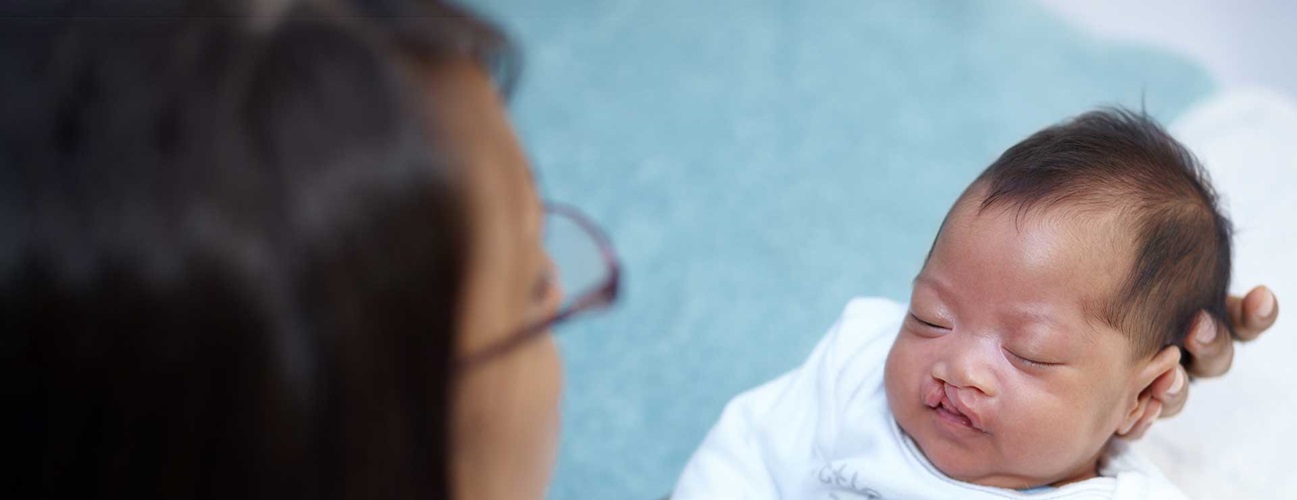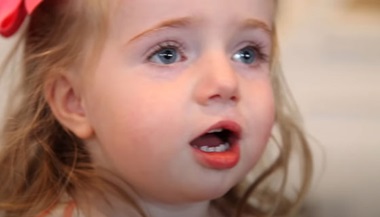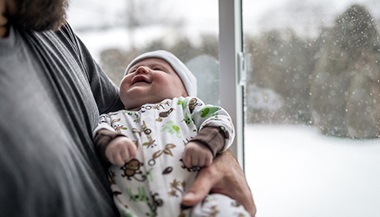Cleft Lip and Cleft Palate
Cleft lip and cleft palate are among the most common congenital (present at birth) facial abnormalities in children. These differences occur when the tissues and bone of the face and mouth do not fuse properly, resulting in a space in the upper lip and/or palate.
Cleft Lip and Cleft Palate Causes
The exact causes of cleft lip and cleft palate are not completely understood. Some evidence suggests the conditions may be genetic. Additional research suggests a combination of genetic and environmental factors affecting the mother during pregnancy — including smoking, diabetes or the use of certain medications — could be connected. Genetic consultation may be suggested.
However, some cleft lip and palate cases may not be related to genetic or environmental factors. The cause of those cases is still unknown, and often, the conditions cannot be prevented.
Cleft Lip and Cleft Palate Complications
Beyond the cosmetic abnormality, other possible complications that may be associated with cleft lip and cleft palate include:
- Feeding difficulties. Feeding difficulties occur more with cleft palate abnormalities. The infant may be unable to suck properly because the roof of the mouth is not fully formed.
- Ear infections and hearing loss. Ear infections are often due to a dysfunction of the tube that connects the middle ear and the throat. Recurrent infections can lead to hearing loss.
- Speech and language delay. Due to the opening of the roof of the mouth and the lip, muscle function may be decreased, which can lead to a delay in speech or abnormal speech. Ask your doctor if consultation with a speech therapist would be right for your child.
- Dental problems. As a result of the abnormalities, teeth may not develop normally and orthodontic treatment may be required.
Facebook Live: July is National Cleft and Craniofacial Awareness Month”
Cleft Lip and Cleft Palate Treatment
Both cleft lip and cleft palate surgeries are performed in the hospital under general anesthesia, and usually require a stay of at least one night.
Cleft Lip Surgery
For most infants with cleft lip, your child’s surgeon can repair the abnormality within the first several months of life. To repair a cleft lip, the plastic surgeon uses a special technique to suture the two sides of the lip together, leaving a scar that blends into the lip. The goal of this procedure is to fix the separation of the lip. Sometimes, a second operation is needed.
What to expect following cleft lip surgery
Discomfort or Pain
- Children may be irritable following surgery, but will be prescribed pain medications to help with this. After two to three days, the child will feel more comfortable and should only require non-aspirin pain medications, which can be discontinued after a few additional days.
- They may have to wear padded arm restraints to prevent them from placing their hands in their mouth and injuring the surgery area. Children may have dissolving stitches or stitches that will be removed five to seven days after surgery. It is normal to have swelling, bruising and blood around the incisions.
Eating and Drinking
- During surgery and afterward, the child will have an intravenous (IV) catheter to provide them fluids until they are able to drink sufficient liquids by mouth.
- The care team will provide instructions on feeding the child after surgery.
Appearance
- The lip scar will gradually fade with time, but will never completely disappear.
Cleft Palate Surgery
Cleft palate repairs are usually done between the ages of 6 to 18 months. This is a more complicated surgery, and it is done when the baby is bigger and better able to tolerate the surgery. Your child’s doctor will advise about the exact timing of the surgery. To repair a cleft palate, the plastic surgeon uses tissue from either side of the mouth to fill in the gap. A second operation may be required.
At your first visit with the plastic surgeon, he or she will explain the details of the surgery, risks, complications, costs, recovery time and outcomes.
What to expect following cleft palate surgery
Discomfort or Pain
Cleft palate surgery is more involved than lip surgery, and patients often have greater discomfort afterward. Patients will be discharged home with a prescription for pain medication.
There may be bloody drainage from the nose and mouth after surgery, which will decrease in one or two days. Many infants have nasal congestion after surgery. Signs of this include snorting, mouth breathing and decreased appetite.
Eating and Drinking
Patients do not eat or drink as usual for two to three days after surgery. The child will have an IV catheter for pain medications and fluids until they are able to drink sufficient liquids.
A small amount of water should be offered after every bottle or meal to cleanse the incision. The child may stay in the hospital for one to two days depending on their feeding after surgery.
The plastic surgeon may suggest that the child eat a soft diet for up to four weeks after surgery. Breast milk and formula are approved to drink after surgery. For older children, appropriate foods include baby foods, popsicles, yogurt, mashed potatoes, gelatin and other foods of similar consistencies.
Stitches and Healing
The child will have stitches in the palate that will dissolve on their own. They may have to wear padded arm restraints to prevent them from placing their hands in their mouth and injuring the surgery area.
The child may have a stitch in their tongue or a tube in their nose after surgery. This is in case they develop a swollen tongue. If swelling is minimal, this will be removed the day after surgery.
The child can walk or play calmly after surgery, but should not engage in rough play or contact sports. They should not place toys or other objects in their mouth for a month after surgery. The child’s care team will inform you when it is OK for your child to return to their previous activities.







